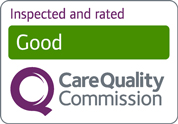Prediabetes: symptoms and causes
Reviewed by Dr Bhavini Shah
Prediabetes is a common but often silent condition where your blood sugar levels are higher than normal but not yet in the diabetes range. Signs of prediabetes may vary by gender or age. In this article, you’ll get an understanding of prediabetes causes including insulin resistance, lifestyle, and genetic factors. These are key in identifying your risks of developing type 2 diabetes.
The positive news is that prediabetes can be reversed or managed through early diagnosis and lifestyle changes like more exercise and a healthier ‘prediabetes diet’. By keeping your blood sugar within a safer prediabetes range, you can help stop your condition progressing to more serious illness.
What is prediabetes?
Prediabetes is a health condition where your blood glucose is higher than normal, but not high enough for a diabetes diagnosis. Also called non-diabetic hyperglycaemia, it’s usually diagnosed with blood tests such as the prediabetes HbA1c test, the fasting blood glucose test, or an oral glucose tolerance test.
Research shows that men are more likely to have impaired fasting glucose, while women are more likely to have impaired glucose tolerance. These differences may be influenced by hormonal changes like menopause, which can affect blood sugar regulation and risk profiles. By recognising and managing your prediabetes, you can take important steps to prevent or delay serious illness such as type 2 diabetes.
Find out how to test for diabetes at home.
Prediabetes symptoms
You don’t get prediabetes symptoms when you have the condition. Most people with prediabetes feel completely well and may not realise their blood sugar levels are higher than normal. If you start to notice symptoms, it often means you’ve already developed type 2 diabetes.
Diabetes symptoms to watch out for include:
- Going to the toilet more often, especially at night
- Feeling more tired than usual
- Losing weight without trying
- Genital itching or thrush
- Cuts and wounds taking longer to heal
- Blurred vision
- Feeling extremely thirsty
If you notice any of these signs of prediabetes progression (symptoms of diabetes), it’s important to speak to your doctor or online clinician. They can give you a prediabetes test, along with advice on managing the condition by eating healthily, and taking regular exercise.
Want a convenient way to check your risk of prediabetes at home? Get our home blood test kit delivered.
How common is prediabetes?
Around 1 in 9 adults in England are estimated to be living with prediabetes, though many are unaware they have it. Prediabetes numbers are increasing worldwide, with experts projecting that more than 470 million people will have the condition by 2030.
Are you more likely to get prediabetes as you get older?
Your age is an especially important prediabetes factor when you're over 40. As your body’s ability to manage blood sugar can decline over time, your risk of developing prediabetes increases. Other additional risk factors are listed below.
Prediabetes blood sugar levels
If your blood sugar levels are higher than normal but not high enough to be classed as diabetes, you’re said to be in the prediabetes glucose range. The main prediabetic tests to check sugar levels in your blood are:
- Fasting blood glucose test - This measures your blood sugar after you haven’t eaten for at least 8 hours. If your result is between 6.1 and 6.9 mmol/L, it means your blood sugar is higher than normal. That’s in the prediabetes range, but not high enough to be diabetes.
- Glycated haemoglobin (A1C) test - This checks your average blood sugar over the past two to three months. If your result is between 42 and 47 mmol/mol (or 6.0% to 6.4%), you’re in the prediabetes range.
- Oral glucose tolerance test - For this, you’ll have a sugary drink and then a blood test two hours later. If your level is between 7.8 and 11.0 mmol/L (or 140 to 199 mg/dL), it shows you have prediabetes.
If your results fall in any of these ranges, it means you have prediabetes, which puts you at higher risk of developing type 2 diabetes. Finding out early gives you the best chance to take action and protect your health.
Causes and risk factors of prediabetes
There are many risk factors for developing diabetes, such as:
- Being overweight or obese, especially around your waist
- Lack of physical activity
- Family history of diabetes
- High blood pressure or cholesterol
- Being from certain ethnic background (South Asian, African-Caribbean, Black African)
- Age (risk increases over 40)
- Having polycystic ovary syndrome (PCOS)
- A history of gestational diabetes (diabetes during pregnancy)
- Being a smoker
Possible complications of prediabetes
If left unmanaged, prediabetes can lead to:
- Type 2 diabetes
- Heart disease
- Stroke
- Nerve damage (neuropathy)
- Kidney disease
- Eye problems (retinopathy)
Can you prevent prediabetes progressing to diabetes?
Many people can stop prediabetes from progressing to type 2 diabetes. In fact, with the right support, you have an up to 50% chance of preventing or delaying type 2 diabetes.
Early diagnosis, healthy eating, regular activity, and weight management all make a big difference. Even small lifestyle changes can have a powerful effect to help reduce prediabetes blood sugar levels.
If you have prediabetes, you may be eligible for the NHS Diabetes Prevention Programme. This can help you in making the lasting lifestyle changes needed so you can avoid type 2 diabetes.
How to reverse and treat prediabetes
Your prediabetes treatment options depend on your lifestyle and health. Here’s what works best:
Diet and weight loss
- Good prediabetes food choices include whole grains, lean proteins and vegetables.
- Reduce how much fat you eat as well as the total amount of calories
- Try to limit sugary drinks and snacks
- Keep an eye on portion sizes
- If you're overweight, aim for gradual and sustainable weight loss
- All alcoholic drinks are high in calories, so it's best to cut down
Physical activity
- Maintain an active lifestyle.
- Try to get at least 150 minutes of moderate or 75 minutes of vigorous aerobic activity a week (or a combination of these).
- Include both aerobic and strength-building activities.
Medical support
- Speak to your GP if you feel you could be at risk of prediabetes and you could use the Diabetes UK ‘Know Your Risk’ tool.
- If you're aged 40-74, there is a free NHS Health Check to assess your risk of type 2 diabetes, along with cardiovascular disease and other conditions such as high blood pressure.
- If you have prediabetes, you may be eligible for the NHS Diabetes Prevention Programme. The lasting lifestyle changes it encourages have been shown to help prevent type 2 diabetes.
Research shows that even modest weight loss, when combined with a healthier diet and regular exercise can all help lower your risk of developing type 2 diabetes. In some cases, your blood sugar can return to normal levels. A clinical study showed that losing 1kg lessened diabetes risk by 16%. Always speak to your GP or clinician before making major changes to your diet or starting new exercise routines.
“Making small lifestyle changes can all add up to a big reduction in prediabetes blood sugar levels. It’s important to stay positive and check in regularly on progress.” - Dr Bhavini Shah
Read our articles on weight loss and nutritional coaching for your weight loss goals.
Prediabetes diet
Managing your diet is key to controlling prediabetes. Here are some practical tips for daily eating:
- Eat regular, balanced meals without skipping meals (this helps control blood sugar and appetite)
- Focus on high-fibre foods like oats, beans and wholegrain bread
- Choose lean proteins such as chicken, fish or tofu
- Limit processed foods, especially those high in sugar or saturated fat
- Include healthy fats from nuts, seeds and olive oil
- Drink water instead of sugary drinks
- Keep an eye on portion sizes
Get ahead of prediabetes
- Prediabetes is a common condition that has no symptoms but can be tested for.
- Prediabetes can be managed and reversed, helping to prevent serious illness like type 2 diabetes.
- If you're concerned about your risk of prediabetes, order our home blood test.
References
https://www.nhs.uk/conditions/diabetes/
https://pubmed.ncbi.nlm.nih.gov/25789110/
https://pubmed.ncbi.nlm.nih.gov/22683128/
https://pmc.ncbi.nlm.nih.gov/articles/PMC5826763/
https://www.diabetes.org.uk/about-diabetes/type-2-diabetes/prediabetes
https://diabetes.org/about-diabetes/diagnosis
https://rightdecisions.scot.nhs.uk/prevent-the-progress-of-diabetes/i-have-been-diagnosed-with-prediabetes/what-is-prediabetes-and-why-does-it-matter/
https://www.nnuh.nhs.uk/departments/diabetes-and-endocrinology/diabetes/pre-diabetes/
https://www.diabetes.org.uk/about-us/news-and-views/30-people-living-type-2-diabetes-england-are-undiagnosed-ons-analysis-shows
https://www.mayoclinic.org/diseases-conditions/prediabetes/diagnosis-treatment/drc-20355284
https://diabetesjournals.org/care/article/29/9/2102/24174/Effect-of-Weight-Loss-With-Lifestyle-Intervention
https://www.swbh.nhs.uk/wp-content/uploads/2012/07/Oral-Glucose-Tolerance-Test-ML4781.pdf
https://labtestsonline.org.uk/tests/glucose-tests





